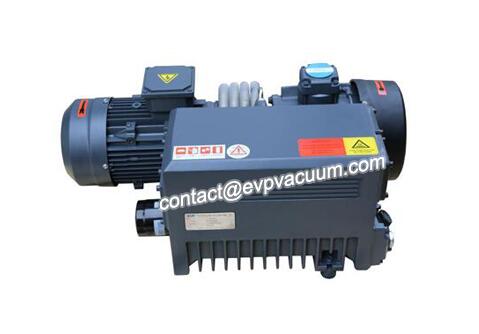Rotary vane vacuum pump in oil and gas recovery system
Oil and gas recovery in oil depots refers to one or two methods of collecting volatile oil and gas from oil depots and loading oil and gas by crane pipes through absorption, adsorption or condensation processes, or reducing oil and gas pollution, or making oil and gas change from gas state to liquid state and then to gasoline, so as to achieve the purpose of recovery and utilization. Let’s share how the rotary vane vacuum pump is applied in the oil and gas recovery system.
Inspection method for leakage of rotary vane vacuum pump in oil and gas recovery system
The oil and gas recovery system is the essential equipment of the gas station, and as the power source of the secondary oil and gas recovery system vacuum pump, its normal operation is an important condition to ensure the gas-liquid ratio stability and realize the secondary oil and gas recovery. But with the passage of time, equipment aging, many vacuum pumps will have leakage problems, which will affect the effect of secondary oil and gas recovery.
If there is leakage under the positive pressure at the back end of the vacuum pump, there is liquid leakage, which is easy to be found; and if there is leakage under the negative pressure at the front end, there is no obvious sign outside, which is not easy to be found. In the long run, the vacuum pump will draw a lot of air from the air, resulting in the rapid pressure rise of the oil tank, resulting in the increase of the emission of the oil tank exhaust pipe. Therefore, it is necessary to check the vacuum pump for leakage during maintenance.
This paper introduces a simple and easy method to help us judge whether there is leakage of vacuum pump.
The main inspection method is: when the rotary vane vacuum pump is running, completely block the inlet of the vacuum pump, connect the air outlet to the water surface, and observe whether there are bubbles emerging.

The specific steps are as follows:
1. Prepare a hose about 30cm long with a connector at one end to connect with the outlet of the vacuum pump; a transparent empty plastic bottle (mineral water bottle is enough) filled with tap water for standby; prepare a rubber pad with a diameter larger than the inlet diameter of the vacuum pump, with a thickness of more than 2mm, and try to make the rubber pad as tough as possible.
2. When the vacuum pump is stopped, disconnect the pipe joints at its inlet and outlet, and connect the prepared hose at the outlet.
3. Try to start the vacuum pump to make it rotate. Seal the vacuum pump inlet with rubber gasket to ensure no air leakage.
4. Insert the hose under the water surface of the plastic bottle, and observe whether there is bubble emerging: if there is no bubble emerging from the hose inserted into the water, it indicates that the vacuum pump is well sealed and there is no leakage; otherwise, if there is bubble emerging, it indicates that the vacuum pump has leakage.
Note: at the beginning of the inspection, the inlet of the vacuum pump must be sealed first, and then the hose at the outlet shall be inserted into the water; at the end of the inspection, the hose shall be taken out of the water first, and then the rubber pad at the inlet shall be removed, otherwise, the water will splash!
Once leakage is found during self inspection, there is no need to be nervous. Generally speaking, leakage is caused by damage of sealing ring. Please contact professional maintenance personnel of vacuum pump manufacturer to arrange return to factory for maintenance. Replace sealing ring or vacuum pump as the case may be!
Oil and gas recovery is a new technology of energy conservation and environmental protection. Oil and gas recovery technology is used to recover the oil and gas discharged in the process of oil storage, transportation, loading and unloading, to prevent air pollution caused by oil and gas volatilization, to eliminate potential safety hazards, to improve the utilization rate of energy and reduce economic losses, so as to obtain considerable returns. Common methods include adsorption, absorption, condensation and membrane separation.
(The article comes from the Internet. If reprinting is not allowed, please contact our company to delete it.)
